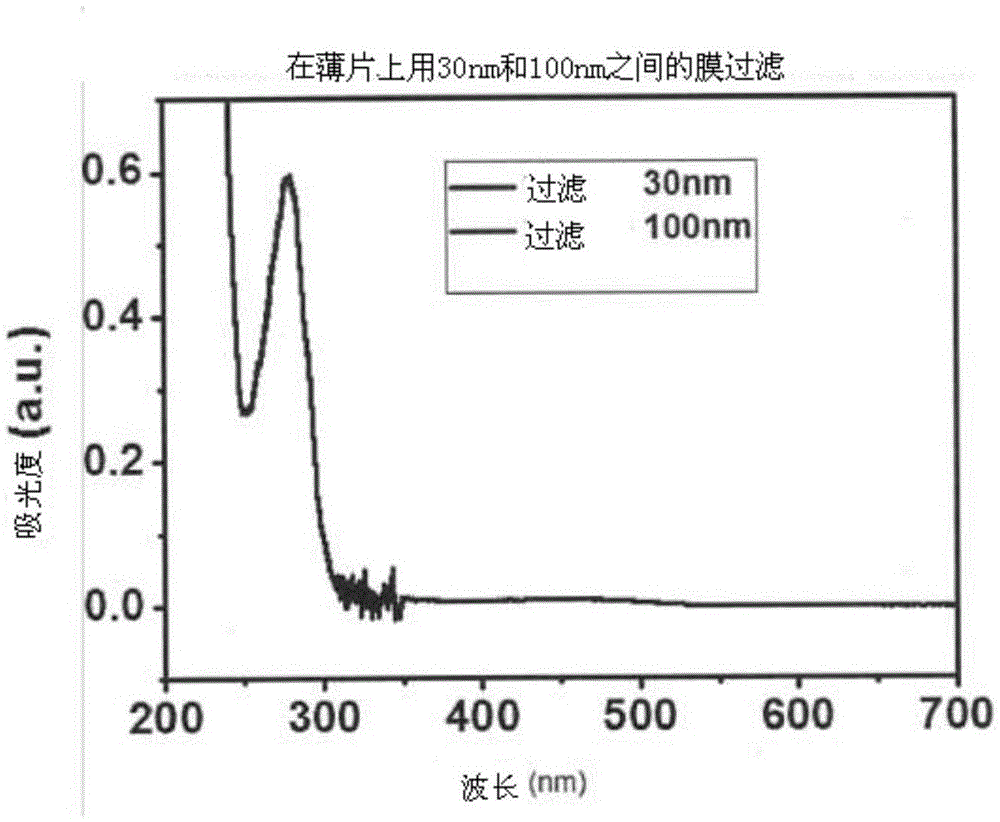Method for determining free copper
A technology for the determination of free copper in vitro, applied in the field of determination of "free" copper in serum, can solve the problems of protein absorbance peak attenuation, low concentration accuracy, high cost, etc.
- Summary
- Abstract
- Description
- Claims
- Application Information
AI Technical Summary
Problems solved by technology
Method used
Image
Examples
example 1
[0068] For the separation of blood proteins, solid phase extraction (SPE) chromatography was developed. Ultra-high molecular weight polyethylene (UHMPE) resin (Sigma-Aldrich lot #434264-1KG) was used as the solid phase, capable of interacting with and retaining serum proteins. In order to prevent the release of protein (ceruloplasmin)-bound copper, instead of pure water, a physiological solution (0.9% NaCl) was used as the mobile phase, pumped by a peristaltic pump to maintain a constant elution flow (flow rate: 400 μl / min) . A 1-ml column is packed with 500 mg of resin ( Figure 6 ) and are moderated using two different strategies:
[0069] - 500 mg of resin, loaded into a column, conditioned with 6 ml of physiological solution.
[0070] - 500 mg of resin was suspended in about 3 ml of methanol and then used to pack the column. Then 6 ml of distilled water was eluted through the column to completely remove the methanol, followed by 6 ml of physiological solution. Then, i...
PUM
 Login to View More
Login to View More Abstract
Description
Claims
Application Information
 Login to View More
Login to View More - R&D
- Intellectual Property
- Life Sciences
- Materials
- Tech Scout
- Unparalleled Data Quality
- Higher Quality Content
- 60% Fewer Hallucinations
Browse by: Latest US Patents, China's latest patents, Technical Efficacy Thesaurus, Application Domain, Technology Topic, Popular Technical Reports.
© 2025 PatSnap. All rights reserved.Legal|Privacy policy|Modern Slavery Act Transparency Statement|Sitemap|About US| Contact US: help@patsnap.com



